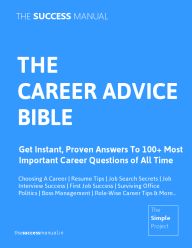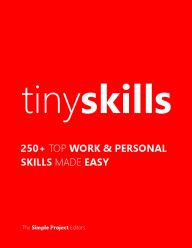On February 16, 2025 By thesuccessmanual Topic: Remarkable, Book summary
This guide belongs to 100 Ways To Be Being Remarkable Series, a special project that brings you business and self-development advice from The Success Manual.
We always remember best the irrelevant.
- Peter Drucker
There must be at least 500 million rats in the United States; of course, I am speaking only from memory.
– Edgar Wilson Nye
HEALTHY LIFESTYLE FOR A HEALTHY MEMORY
Take your vitamins: Vitamins that are essential for the proper working of memory: thiamin, folic acid, and B12 vitamin.
They are found in bread and cereal, vegetable and fruits.
Drink ample Water: Doctors say Water helps maintain the memory systems working, especially in older people. Lack of water in the body has an immediate and deep effect on memory; dehydration can generate confusion and other thought difficulties.
Get ample sleep: To be able to have a good memory, it is essential that we allow the brain to have enough sleep and rest.
Do not smoke: Smoking lowers the amount of oxygen arriving in the brain, and this often affects memory.
Coffee and tea in moderation: Although coffee and tea help maintain attention and end sleepiness, but doctors say that the excitation promoted by these drinks may interfere with the memory function
Keep your brain sharp
Stimulate memory so your memory to the utmost.
Challenge a novelty. Learn new skills.
REMEMBERING WHAT YOU READ IS BASED ON FOUR MAIN FACTORS
1. The Context
Putting the material into a frame of reference – right from the start, look to establish the context for the material – in which ‘box’ does it fitWhere should you place it within the whole range of your managerial capabilities?
2. Understanding
Insist on material being presented in summary form, and in short paragraphs and sentences; tell people to avoid using jargon even if you understand the terminology. When you understand better, you remember.
3. Memory Traces
Important in memorizing material is the strength of the memory trace attached to the information. The trace lets you recall all the material because your mind can literally ‘find’ what it is that you are seeking. For a trace to have strength, you rely on:
a) Association: We tend to remember something we have read when it is also strongly related with a memorable picture, idea, pattern, arrangement, and event and so on. We rarely remember, for example, a telephone number as a straightforward sequence of numbers,
916345251033
Typically, we remember it by arranging it in blocks (also known as chunking)
9163452 51033
b) Motivation: Sometimes, we ‘motivated’ to remember a piece of information because it is associated with something that is not easily forgotten – ‘memorable association’.
4. Reinforcement: You may need to reinforce your recollection in various ways until the information ‘sticks’. You may need to return to a piece of information at quite short intervals initially to strengthen the memory.
- Adapted from 20 Essential Skills for Managers
QUANTUM MEMORY POWER
1. Association
- link method - connect the words together using a story
2. Location
3. Imagination
- color, humor, sex, etcetera
REVIEWS
1. immediately
2. 24 hours later
3. 1 week later
4. 1 month later
5. 3-6 months later
FACES ("Always give a face a place.")
1. you remind me of someone
- face (like aunt's), place (aunt's house), key image
2. what's my line
- what sort of work the persons does
3. feature link
. - person, feature, scene
4. first name places
. - use an association with the person's first name to transport that person to a location
To memorize a speech
1. condense the contents into key points
2. create symbols for each point, by using imaginative, colorful, and meaningful key image
3. place each key image on various stages along a familiar mental journey
Miscellaneous Memory Techniques
CREATING MEMORABLE MNEMONIC IMAGES
1. Synesthesia / Sensuality - sound, sight, taste, touch, smell
2. Movement - shaking, flying, kicking,...
3. Association - associate with stable memories
4. Sexuality - you can imagine anything having sex
5. Humor - silly, connected with jokes
6. Imagination - anything at all
7. Number(s) - details like sequence and/or order
8. Symbolism - associate abstract pattern with meaningful items
9. Color - use more than one color, too
10. Order / Sequence - use things like ‘PegSystems or Memory Palaces‘ to your advantage
11. Positivity - people like to remember positive things
12. Exaggeration - very big, very small, very small, extremely numerous
- Adapted from ‘Quantum Memory Power’ by Dominic O'Brien
If you liked this article, please bookmark it on Delicious or share on Twitter. Thanks, friends. Follow us on Twitter.
We don't recommend any other guide than our very own The Success Manual - Encyclopedia of advice to 130 most important skills.

